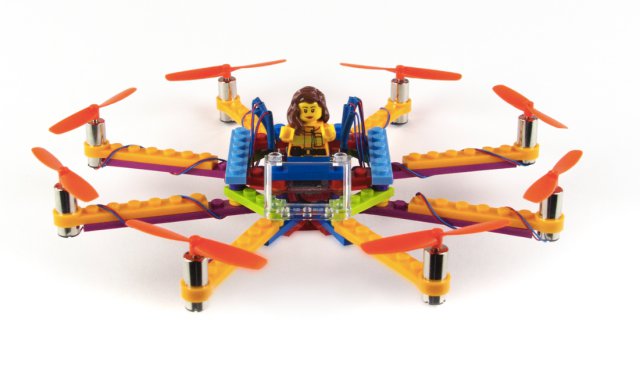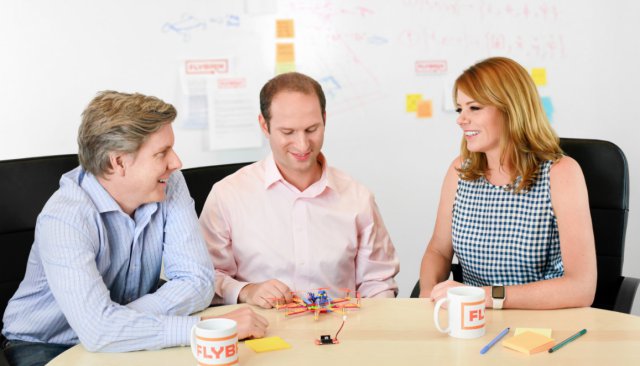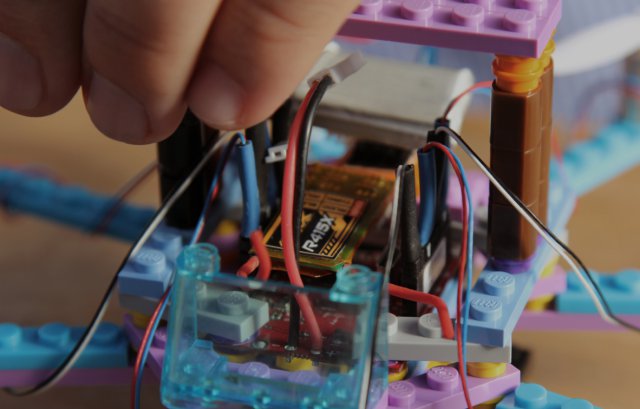first dreamed up a drone that kids could build with LEGO bricks in 2015. At the time, co-founders Amir Hirsch, Robb Walters and Holly Kasun debated the merits of launching with a crowdfunding campaign.
They craved the exposure that brands like Pebble and Oculus or Scanadu attracted on Kickstarter and Indiegogo, respectively, but they knew consumers were growing suspicious of promises made by crowdfunding hardware startups.
According to research from the University of Pennsylvania, about 9 percent of projects that raise funds on Kickstarter fail to deliver the “rewards” they promised backers. While Kickstarter commissioned this independent study and published it in March 2015, other crowdfunding sites, notably Indiegogo, haven’t disclosed their numbers. At least the crowdfunding platforms set terms of service so that users are braced for the potential they may not get what they’re hoping for when they back a project.
Kasun said, nothing seemed to draw irate responses online like failed hardware campaigns in the world of crowdfunding. Users seemed to be more patient with artistic endeavors. But they were furious if they didn’t get their Coolest Cooler or Kreyos smartwatch on time — or at all. Drones were no exception.
By the time her company was getting ready to manufacture its LEGO drone kits, projects like the Torquing Group’s Zano Nano drone, and AirDroid’s Pocket Drone had failed to materialize. Kickstarter even hired an investigative journalist to try to track down answers as to what happened to the Zano for the project’s 12,000 backers.
Back then, Lily Robotics’ flying and following cameras were delayed. Soon, that startup would face a lawsuit from the San Francisco District Attorney’s office over false advertising. And by 2017, Lily would shut down completely, despite having raised $15 million in venture capital.
Ultimately, Flybrix decided that to make a crowdfunding campaign work, its drones would have to be past the prototype stage, and the company would need to test its supply chain to make sure its contract manufacturers were ready to churn orders.
Kasun said, “It’s not a universal number, but if you can get 1,000 units through your system, you will have a statistically high enough sample set that you can see and solve problems that may show up intermittently in a smaller run.”
To finance its early manufacturing efforts, without crowdfunding, the company raised about $1 million in seed funding. Admittedly, the co-founders said, it would have been easier to raise seed funding after demonstrating consumer demand for their toys, in part, through responses to a crowdfunding campaign.
Nonetheless, the company still feels it made the best decision, skipping crowdfunding to make its first run of drones available to a private group of customers. As of September of 2016, Flybrix made the drones generally available to the public, selling directly on their own site. They found the exposure they wanted, without relying on Kickstarter or Indiegogo.
Within 90 days of their official launch, the company sold $1.9 million worth of these drone kits. And to date it has shipped more than 8,000 units. The startup is now winning big orders from schools and districts, without the aid of using a distributor. And it even landed its crash-friendly drone kits in a tech-minded store called b8ta in Palo Alto.
“Our first product is nowhere near as sophisticated as an early Apple computer. But drones are tiny flying robots. We want to be in education for a really long time, like Apple was from the start. But ultimately, we want to go into consumer electronics more broadly,” the COO said.
Next, Flybrix plans to raise additional capital, create new kits and mobile app features and develop educational curriculum that can work in conjunction with its drones. The company has not yet decided if a crowdfunding campaign is in its future.
Source: TechCrunch



